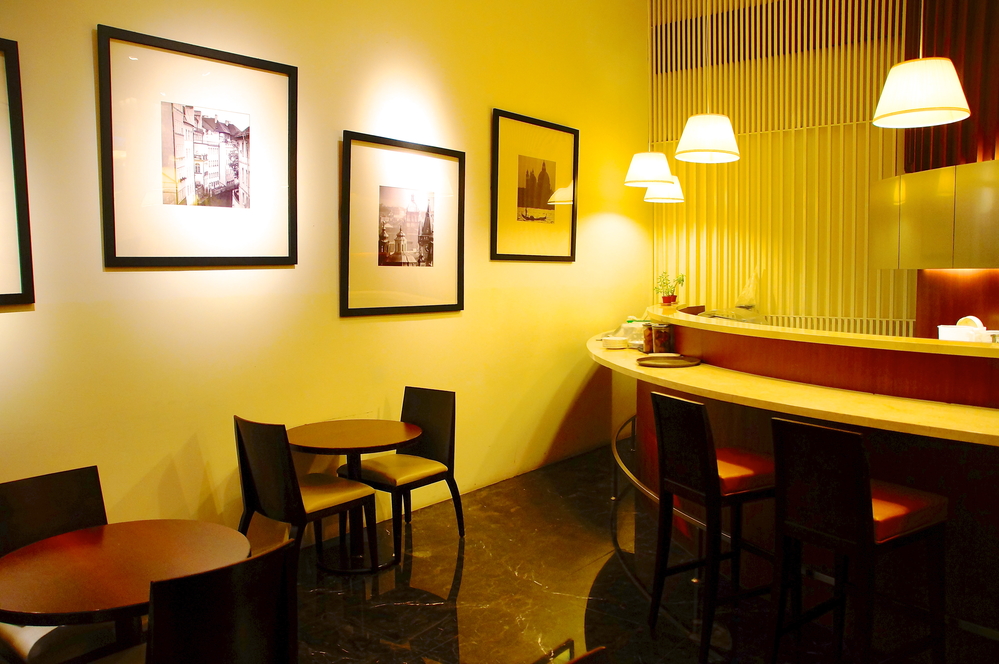Best Ambiance Restaurants Islamabad: Perfect Destinations for a Remarkable Dish
Best Ambiance Restaurants Islamabad: Perfect Destinations for a Remarkable Dish
Blog Article
Savor Authentic Oriental Food With a Pan-Asian Spin for a Cooking Adventure
Embarking on a cooking trip with authentic Asian cuisine, enhanced with a Pan-Asian spin, offers a special chance to check out the abundant tapestry of flavors that define the region's varied cooking practices. As you ponder these luring dishes, take into consideration the cultural narratives and historic influences that shape them, each bite providing a story waiting to be found. pan asian dining Islamabad.

Exploring Pan-Asian Flavors
In the world of worldwide gastronomy, Pan-Asian food attracts attention for its exceptional diversity and the unified interaction of flavors from various Oriental societies. This culinary approach commemorates the rich customs and special components found across the continent, developing a tapestry of tastes that is both enjoyable and intriguing. Secret to Pan-Asian food is its capacity to balance contrasting tastes-- pleasant, salty, spicy, and sour-- while highlighting the freshness and high quality of each active ingredient.
From the umami-rich soy sauce of Japan to the fiery chili peppers of Thailand, Pan-Asian cuisine uses a comprehensive combination of tastes. These components are typically combined in inventive methods, boosting recipes with layers of complexity. As an example, using fragrant herbs such as lemongrass and cilantro, typical in Vietnamese and Thai food, adds a rejuvenating brightness to dishes, while the consolidation of coconut milk supplies a creamy, rich structure.
The focus on fresh produce and aromatic flavors guarantees that each meal is not only a feast for the taste buds yet additionally for the senses. Pan-Asian food invites restaurants to begin on a cooking trip, exploring the vast and varied landscapes of Oriental gastronomy with every bite.
Blend Meals to Try
While Pan-Asian cuisine is commemorated for its conventional flavors, the modern culinary landscape is increasingly accepting combination meals that mix these classic elements with influences from various other regions. This ingenious technique not just honors the abundant heritage of Asian cooking arts however also presents novel taste experiences that interest contemporary tastes.
A prime example of such a blend meal is the Korean-Mexican taco, where marinated bulgogi beef is covered in a warm tortilla, topped with kimchi and a hot gochujang-infused salsa. This combination weds the bold, mouthwatering flavors of Korea with the lively, fresh components of Mexican food. Likewise, sushi burritos have gotten appeal, integrating the delicate creativity of Japanese sushi with the passionate, hand-held benefit of a burrito, usually featuring blend ingredients like tempura shrimp and avocado with a drizzle of wasabi mayo.
One more significant dish is Thai curry ramen, which infuses the luscious, fragrant spices of Thai curry into the calming broth of traditional Japanese ramen, developing a harmonious mix that tantalizes the detects. These blend dishes prolong past simple novelty; they stand for a cooking discussion in between cultures, motivating expedition and development on the planet of Pan-Asian cuisine.
Essential Ingredients and Spices
To truly appreciate Pan-Asian cuisine, one should comprehend the necessary active ingredients and flavors that form its structure. This varied cooking design draws from an abundant tapestry of Eastern practices, employing a harmonious blend of tastes and textures.
Aromatic components are critical, with ginger, lemongrass, and garlic being common across different Pan-Asian dishes. These active ingredients provide a great smelling base that enhances the intricacy of tastes. Spices such as celebrity anise, cardamom, and cinnamon present warmth and personality, resembling influences from areas like China and India.

Food Preparation Methods and Tips
Understanding the art of Pan-Asian cuisine requires experience with its unique cooking methods, each contributing to the vibrant tapestry of tastes this cooking custom is celebrated for. Central to these approaches is the stir-fry, a fast food preparation method that protects the dietary honesty and dazzling shades of ingredients. Using a wok, the stir-fry technique enables also heat circulation, vital for accomplishing the particular structure and flavor balance of Pan-Asian meals.
One more essential method is steaming, especially common in Chinese cuisine. This gentle approach keeps the all-natural tastes and nutrients Your Domain Name of ingredients, making it suitable for fish and shellfish and veggies. Dumplings, a precious staple, usually gain from steaming, leading to soft, delicious textures.
Cooking, likewise important, gives smoky midsts to recipes such as Korean bulgogi or Japanese yakitori (Chinese food Islamabad). This method often entails marinating active ingredients, permitting flavors to pass through deeply before food preparation over an open fire or warmer
Finally, grasping the art of stabilizing flavors-- sweet, sour, salted, bitter, and umami-- is essential. Correctly layering these elements can elevate a dish from common to amazing, providing a complex and pleasing cooking experience that embodies the essence of Pan-Asian food.
Dining Experiences Worldwide
Across the world, Pan-Asian cuisine uses an unrivaled dining experience, commemorated for its abundant tapestry of flavors and vivid presentations. This cooking sensation has actually transcended cultural boundaries, catching the hearts and palates of food fanatics worldwide. In multicultural cities fresh York, London, and Sydney, Pan-Asian restaurants act as melting pots where cooking practices from Thailand, Japan, China, and past converge, supplying restaurants with an eclectic mix of meals that highlight the area's variety.
The international allure of Pan-Asian cuisine depends on its capability to use both authenticity and advancement. Chefs masterfully wed standard active ingredients such as lemongrass, soy sauce, and miso with modern techniques, causing recipes that are both refreshingly new and familiar. This fusion allows diners to start a culinary journey that respects heritage while welcoming modernity.
Furthermore, dining experiences are elevated with thoughtfully designed settings that mirror the values of Pan-Asian looks. From minimalist Japanese-inspired insides to vivid Thai-themed areas, each dining establishment supplies a distinct atmosphere that matches the cooking offerings. Consequently, clients are not merely consuming a meal yet partaking in a social experience, making Pan-Asian eating a truly global sensation.
Final Thought
The expedition of Pan-Asian cuisine offers a profound understanding of the elaborate interplay of tastes and culinary traditions across Asia. By embracing combination meals such as Thai curry Recommended Site ramen and sushi burritos, the cooking trip not just highlights the flexibility of standard active ingredients a knockout post yet also showcases cutting-edge modern-day methods. This gastronomic experience, enhanced by cooking methods and essential seasonings, offers a distinct opportunity to value the cultural diversity and cooking artistry that define Pan-Asian cuisine on a worldwide scale.
Beginning on a culinary journey through authentic Asian cuisine, enhanced with a Pan-Asian spin, offers an one-of-a-kind chance to check out the rich tapestry of flavors that define the area's varied culinary practices.In the realm of worldwide gastronomy, Pan-Asian food stands out for its exceptional diversity and the harmonious interplay of flavors from numerous Eastern cultures. Key to Pan-Asian food is its capability to stabilize different tastes-- wonderful, salted, spicy, and sour-- while highlighting the quality and top quality of each component.

Report this page